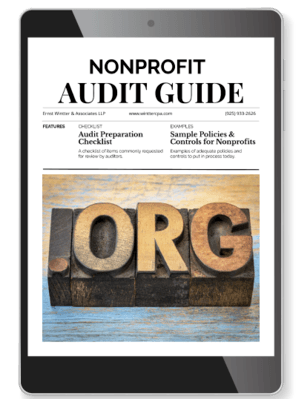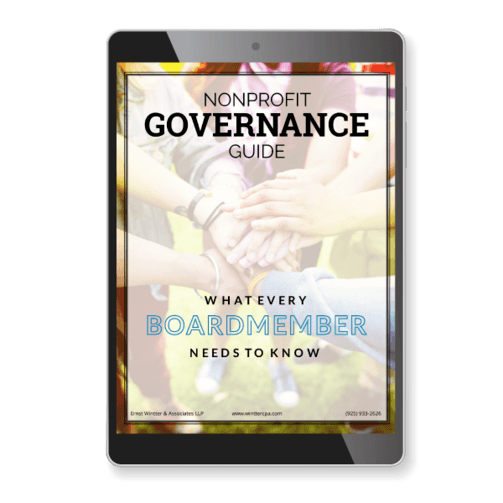With nearly two million nonprofits across the United States, it’s understandable to worry that your organization might get lost in the crowd. This can lead many leaders to adopt a competitive mindset—after all, there are only so many donors, volunteers, and grants to go around.
But the decision to compete or collaborate isn’t always black and white. While competition can be necessary in certain situations, collaboration with other organizations can offer powerful benefits—such as shared resources, expanded reach, and increased impact.
The key is knowing when to pursue partnerships and when to stand out on your own. The right choice depends on your goals, timing, and long-term strategy.
Explore this guide to help your nonprofit determine when to compete or collaborate—and how to make that choice work for your mission.
Know What You’re Up Against
Most of the organizations you are competing against will fall into one of two categories: direct competition and indirect competition.
Direct Competition
Nonprofits with similar missions and operating areas fall into this category. They often compete for the same donors and funding opportunities. These direct competitors can make it harder to hit your fundraising goals. To stay ahead, keep a close eye on their activities. Here are some tips to help you do that:
- Follow them on social media
- Subscribe to their newsletters
- Analyze their annual reports
And don’t hesitate to borrow good ideas. Just make sure to tailor them to your organization’s unique mission and supporters.
Indirect Competition
Sometimes, the competition isn’t so obvious. You might run a nonprofit school, but you’re still competing with food banks, animal rescues, and even your local public radio station for community support.
While collaboration with these organizations can be mutually beneficial, you also need to keep track of their campaigns and events. You don’t want to host a big, expensive event on the same day as another neighborhood entity.
When to Shift to Collaboration
Many nonprofits in your area can become valuable partners. Perhaps a nearby nonprofit serves a slightly different demographic or focuses on a complementary aspect of your mission. Sharing resources with other nonprofits helps with reducing costs and maximizing the impact of both entities.
Find the Right Partners
Collaboration sounds great on paper, but it works best when you choose your partners carefully. Look for organizations that:
- Share your vision and values
- Have resources or connections you lack
- Serve a population or region you don’t currently reach
You can vet most prospective partners by asking the simple question, “What does this entity bring to the table?” You need to ask the same question of your organization.
Keep in mind that just because you are aligned with another entity does not mean collaboration will be smooth sailing. Leaders used to running the show may struggle to share responsibility for decision-making. Before diving in, clearly define who is responsible for what and outline conflict resolution strategies.
The Value of Networking
Even if you never formally collaborate with other nonprofits, building strong relationships with leaders in your sector can be extremely valuable. Networking keeps you informed about trends and opportunities in your community.
However, before you seek out networking opportunities, it’s vital that you ensure your own house is in order. A nonprofit audit can solidify your internal controls and processes, which will position your entity as an appealing partner for prospective collaborators.
Get Ready to Collaborate With an Audit
Contact Ernst Winter & Associates LLP to discuss how you can make the most of your nonprofit’s resources. Our auditing solutions help you promote compliance while also identifying ways to become more efficient. We look forward to assisting your nonprofit in driving meaningful change through responsible resource allocation.
Why Choose Us
Helping You Decide When to Compete or Collaborate
At Ernst Wintter & Associates LLP, we recognize that in today’s complex financial environment, organizations must often make strategic decisions that go beyond the numbers. One of the most pressing decisions nonprofits and businesses face is whether to compete or collaborate. Our experienced team is here to help you evaluate these opportunities with clarity and confidence.
Based in Walnut Creek, CA, our accounting firm has spent years serving individuals, businesses, and nonprofit organizations with expert tax and accounting solutions. We pride ourselves on our professionalism, integrity, and a client-first approach to service. Our clients are our greatest asset, and we’re committed to helping them make informed, forward-thinking financial decisions.
Choosing to compete or collaborate can affect everything from fundraising and service delivery to cost-efficiency and organizational growth. Our team brings a balanced perspective backed by decades of experience across industries, enabling us to offer practical, data-driven guidance to support your strategic path.
Whether you’re exploring partnerships with like-minded nonprofits, considering joint ventures, or evaluating competitive positioning, our well-rounded professionals provide the insight needed to assess risks, identify synergies, and optimize long-term outcomes.
We also go above and beyond to stay current with the latest industry standards. Our accountants exceed continuing education requirements to ensure we’re always offering the most updated and effective strategies.
We understand that no two organizations are alike. That’s why our solutions are customized to your goals, challenges, and mission—whether you’re seeking cost savings, scaling impact, or solidifying your financial position.
To learn more about this important topic, we recommend reading this Stanford Social Innovation Review article on strategic collaboration.
When you’re ready to evaluate the best strategy for your organization—whether to compete or collaborate—Speak with an Expert at Ernst Wintter & Associates LLP. We’re here to help you move forward with confidence and purpose.








